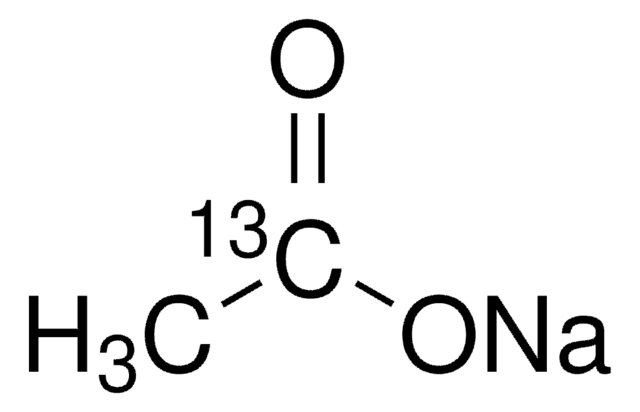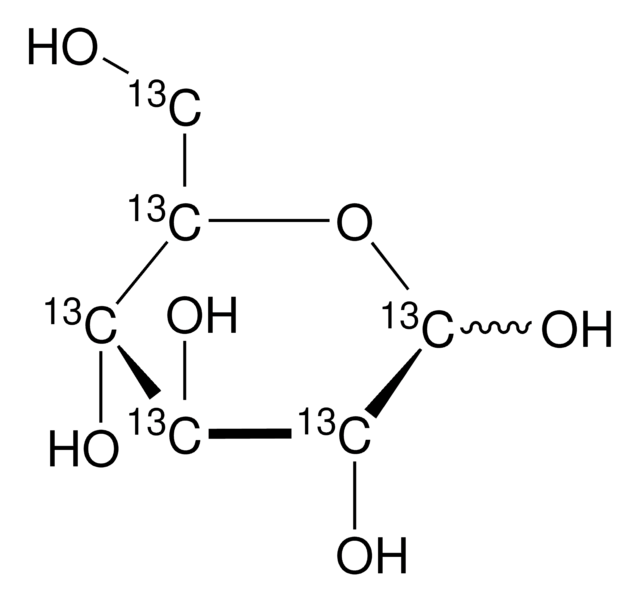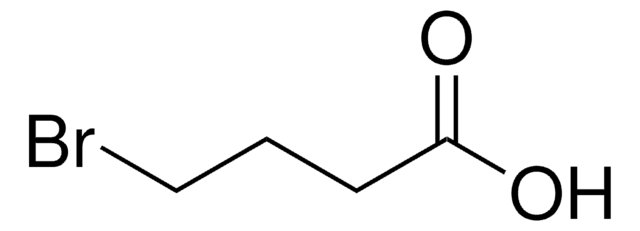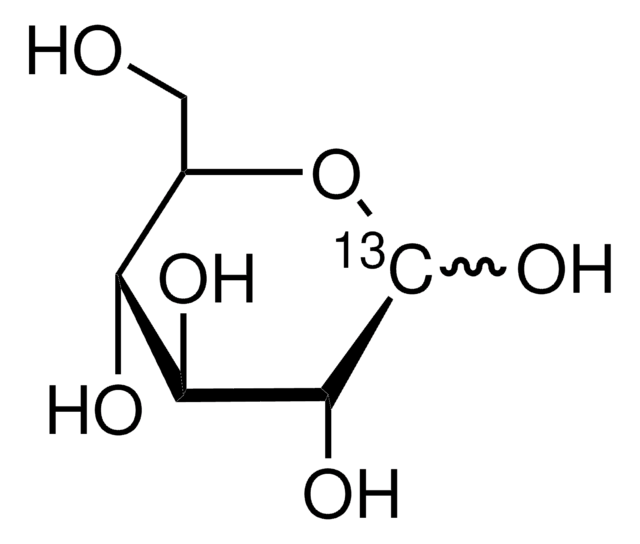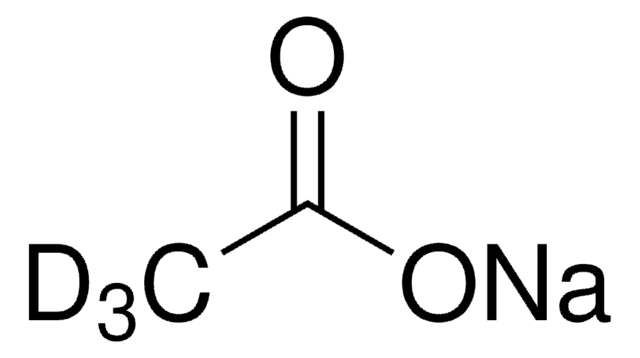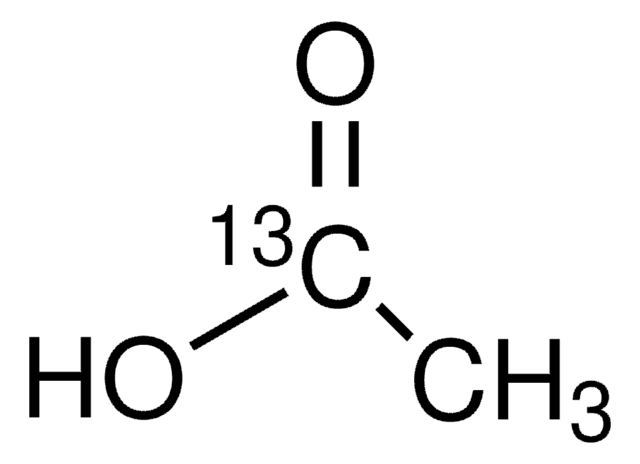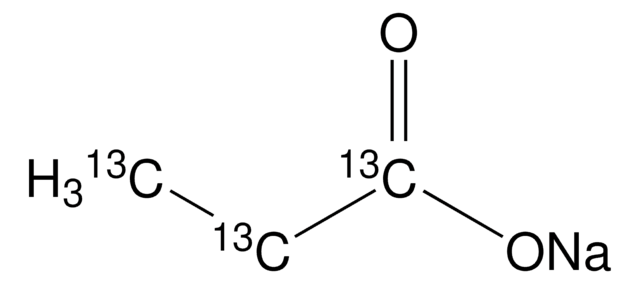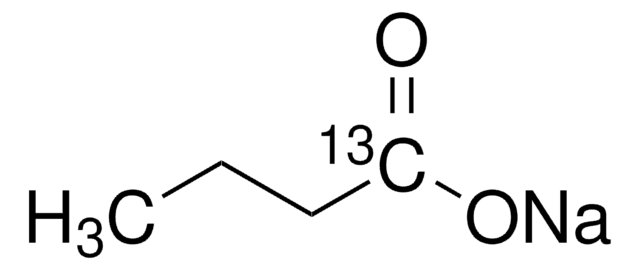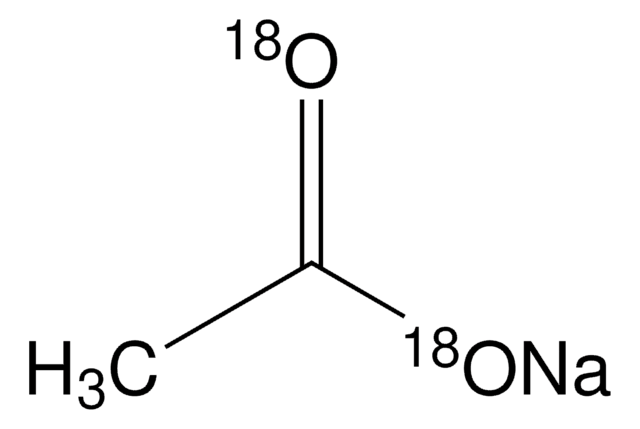282014
Sodium acetate-13C2
99 atom % 13C
Sinónimos:
13C Labeled acetic acid sodium salt, 13C Labeled sodium acetate, Acetic acid-13C2 sodium salt
About This Item
Productos recomendados
isotopic purity
99 atom % 13C
Quality Level
technique(s)
bio NMR: suitable
protein expression: suitable
mp
>300 °C (dec.) (lit.)
mass shift
M+2
SMILES string
[Na+].[13CH3][13C]([O-])=O
InChI
1S/C2H4O2.Na/c1-2(3)4;/h1H3,(H,3,4);/q;+1/p-1/i1+1,2+1;
InChI key
VMHLLURERBWHNL-AWQJXPNKSA-M
¿Está buscando productos similares? Visita Guía de comparación de productos
Packaging
Storage Class
11 - Combustible Solids
wgk_germany
WGK 1
flash_point_f
Not applicable
flash_point_c
Not applicable
ppe
Eyeshields, Gloves, type N95 (US)
Elija entre una de las versiones más recientes:
¿Ya tiene este producto?
Encuentre la documentación para los productos que ha comprado recientemente en la Biblioteca de documentos.
Los clientes también vieron
Artículos
Solid-state NMR on Larger Biomolecules; Sigma-Aldrich.com
Sigma-Aldrich.com presents an article concerning MRI/MRS and the use of isotopes in hyperpolarization.
Dynamic Nuclear Polarization (DNP) is a phenomenon by which high spin polarization, typically derived from a bath of free radical electrons, is transferred to a nuclear spin bath, enhancing the difference between the nuclear energy levels and thereby producing dramatically enhanced NMR signals for detection.
Nuestro equipo de científicos tiene experiencia en todas las áreas de investigación: Ciencias de la vida, Ciencia de los materiales, Síntesis química, Cromatografía, Analítica y muchas otras.
Póngase en contacto con el Servicio técnico